Back pain diet. Anti-Inflammatory Diet: Eating to Alleviate Back Pain
How can diet impact back pain. Which foods may cause or reduce inflammation. Can changing your diet quickly fix back pain. What role do calcium and vitamin D play in spine health.
Understanding the Link Between Diet and Back Pain
Back pain is a common ailment that affects most people at some point in their lives. While the causes of back pain are diverse, ranging from injuries to chronic conditions, there’s growing evidence that diet can play a significant role in either exacerbating or alleviating this discomfort. But how exactly does what we eat influence our back health?
Research suggests that certain foods can contribute to inflammation in the body, which may worsen back pain. Conversely, an anti-inflammatory diet may help reduce pain and improve overall spinal health. However, it’s important to note that dietary changes are not a quick fix for back pain. Rather, they should be part of a comprehensive approach to managing and preventing this condition.
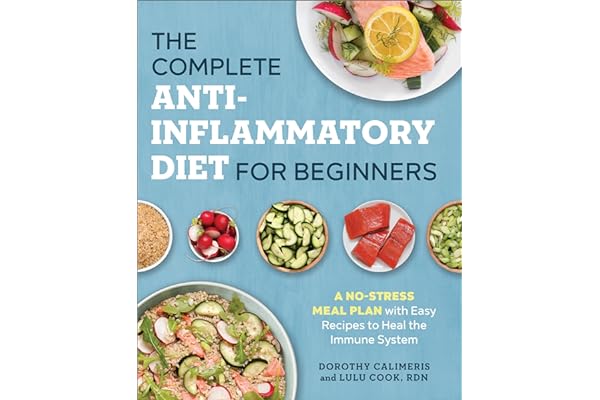
Pro-Inflammatory Foods: What to Avoid
A pro-inflammatory diet is typically characterized by a high intake of processed foods, refined carbohydrates, and unhealthy fats. These foods can contribute to increased inflammation in the body, potentially exacerbating back pain. But which specific foods should you be wary of?
- Unhealthy oils (corn, soybean, sunflower, safflower, canola)
- Processed carbohydrates (white bread, pasta, breakfast cereals, snack foods)
- Sugar-sweetened beverages
- Fried foods
- Excessive red meat consumption
By reducing your intake of these pro-inflammatory foods, you may be able to decrease overall inflammation in your body and potentially alleviate some back pain symptoms.
The Power of an Anti-Inflammatory Diet
On the flip side, an anti-inflammatory diet rich in fruits, vegetables, lean proteins, and healthy fats may help reduce inflammation and support spine health. The Mediterranean diet is often cited as an excellent example of an anti-inflammatory eating pattern. But what specific foods should you incorporate into your diet to combat inflammation?

- Fatty fish (salmon, tuna, mackerel, sardines)
- Berries (blueberries, strawberries, raspberries)
- Dark leafy greens
- Legumes and pulses
- Nuts and seeds
- Olive oil
- Anti-inflammatory herbs and spices (ginger, turmeric, garlic)
By incorporating these foods into your diet, you may be able to reduce inflammation and potentially alleviate some back pain symptoms. However, it’s important to remember that dietary changes should be part of a comprehensive approach to back pain management.
The Nightshade Vegetable Controversy
There’s been some debate in recent years about the potential inflammatory effects of nightshade vegetables. This family includes tomatoes, eggplants, bell peppers, and potatoes. But is there any truth to the claims that these foods can worsen inflammation and back pain?
Currently, there’s no scientific evidence to support the idea that nightshade vegetables are inherently inflammatory. While some individuals may be sensitive to these foods, for most people, nightshades are a healthy part of a balanced diet. In fact, many nightshade vegetables are rich in antioxidants and other beneficial compounds that may help reduce inflammation.
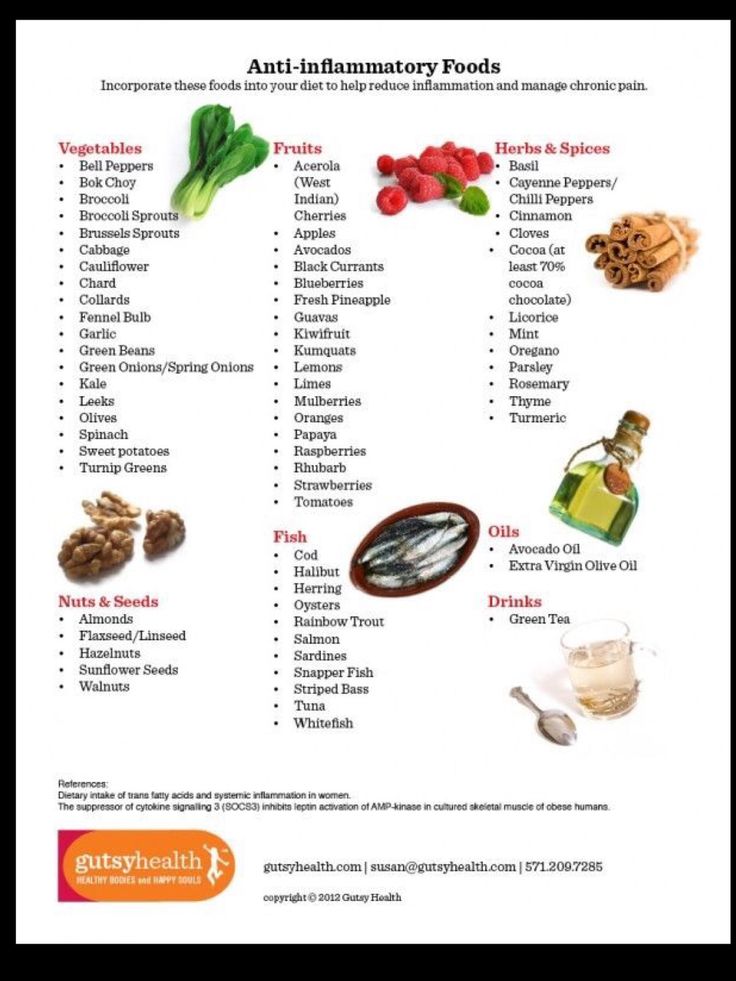
If you suspect that nightshade vegetables may be contributing to your back pain, consider eliminating them from your diet for a few weeks and monitor your symptoms. However, it’s always best to consult with a healthcare professional before making significant dietary changes.
The Role of Calcium and Vitamin D in Spine Health
When discussing diet and back pain, it’s crucial to consider the role of specific nutrients in maintaining spine health. Two key players in this regard are calcium and vitamin D. But why are these nutrients so important, and how can you ensure you’re getting enough?
Calcium is essential for maintaining strong bones, including the vertebrae in your spine. Vitamin D, on the other hand, helps your body absorb and use calcium effectively. Together, these nutrients contribute to overall bone health and may help prevent conditions that can lead to back pain, such as osteoporosis.
Sources of Calcium and Vitamin D
While dairy products are well-known sources of calcium, there are many other foods that can help you meet your calcium needs:
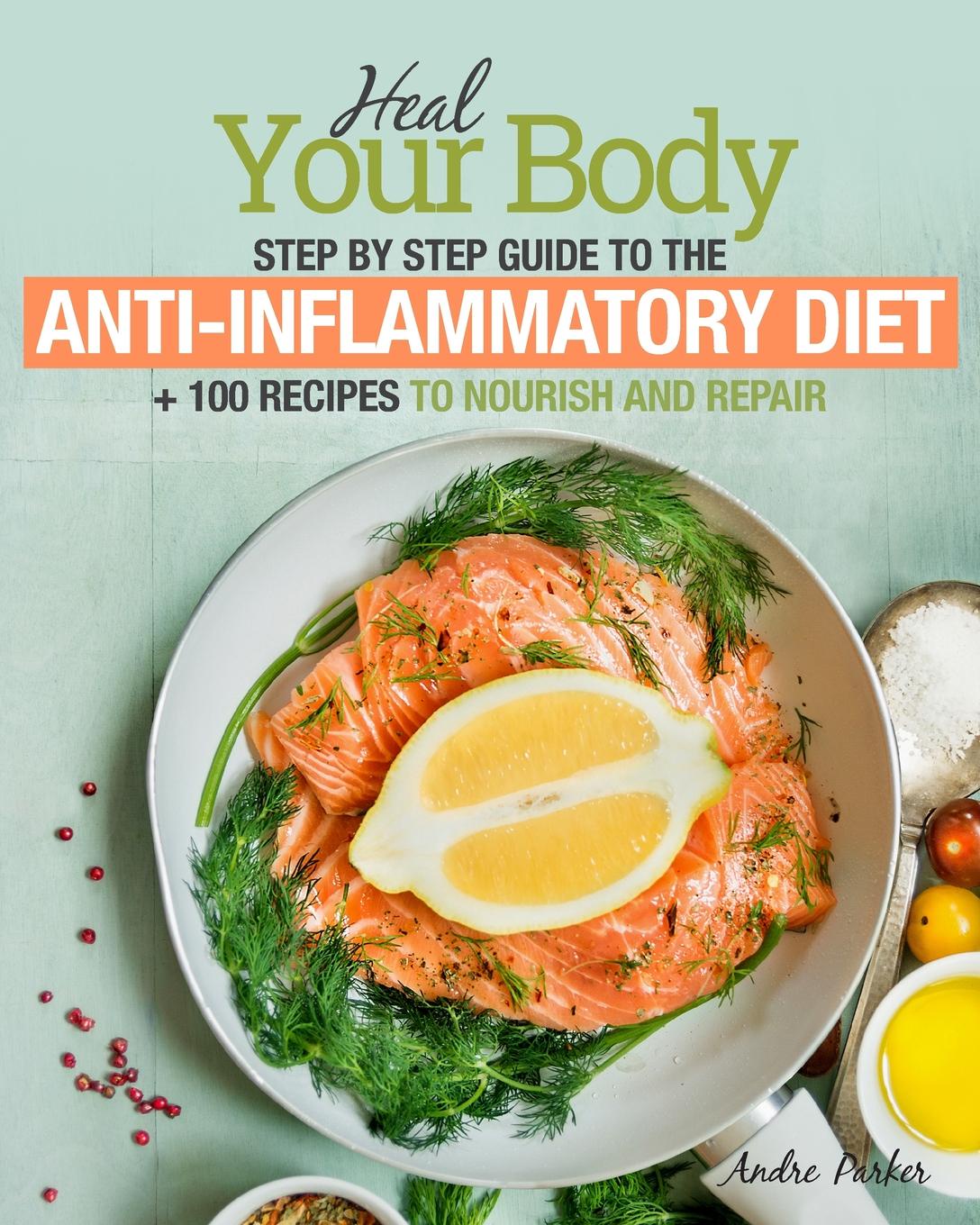
- Leafy greens (spinach, kale, collard greens)
- Sardines (with bones)
- Fortified plant-based milk alternatives
- Tofu (made with calcium sulfate)
For vitamin D, consider incorporating these foods into your diet:
- Fatty fish (salmon, tuna)
- Egg yolks
- Mushrooms (especially those exposed to UV light)
- Fortified foods (some cereals, orange juice, and milk products)
If you’re concerned about your calcium or vitamin D levels, it’s important to consult with a healthcare professional. They may recommend dietary changes or supplements to ensure you’re getting adequate amounts of these crucial nutrients.
Implementing Dietary Changes for Back Pain Relief
While dietary changes can potentially help alleviate back pain, it’s important to approach this strategy realistically. How can you effectively incorporate anti-inflammatory foods into your diet, and what should you expect in terms of results?
First, focus on gradually increasing your intake of anti-inflammatory foods while reducing pro-inflammatory ones. This might involve swapping out refined grains for whole grains, choosing olive oil instead of vegetable oils, or adding a serving of fatty fish to your weekly meal plan.
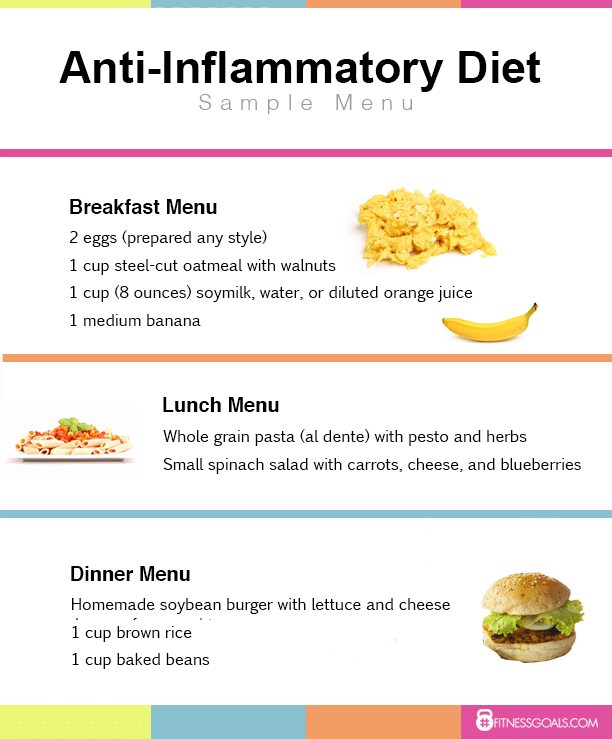
Remember that dietary changes are not a quick fix. It may take several weeks or even months to notice significant improvements in your back pain. Moreover, diet should be just one part of a comprehensive approach to managing back pain, which may include exercise, proper posture, stress management, and medical treatments as recommended by your healthcare provider.
Tips for Maintaining an Anti-Inflammatory Diet
- Plan your meals in advance to ensure a balanced intake of anti-inflammatory foods.
- Experiment with new recipes featuring anti-inflammatory ingredients to keep your diet interesting.
- When dining out, look for restaurants that offer Mediterranean or plant-based options.
- Stay hydrated by drinking plenty of water throughout the day.
- Consider keeping a food diary to track how different foods affect your back pain levels.
Beyond Diet: A Holistic Approach to Back Pain Management
While diet plays a crucial role in managing inflammation and potentially alleviating back pain, it’s important to remember that it’s just one piece of the puzzle. What other factors should you consider in your quest for back pain relief?
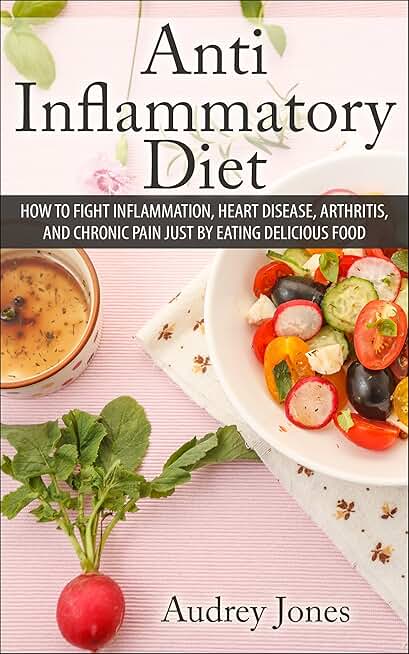
A comprehensive approach to back pain management typically includes:
- Regular exercise, including stretching and strength training
- Maintaining good posture
- Stress management techniques (e.g., meditation, deep breathing exercises)
- Proper sleep habits and ergonomic sleep positions
- Weight management
- Physical therapy or chiropractic care as recommended by a healthcare provider
By combining dietary changes with these other strategies, you may be able to more effectively manage your back pain and improve your overall quality of life.
The Future of Diet and Back Pain Research
As our understanding of the relationship between diet and inflammation continues to grow, what can we expect in terms of future research and treatments for back pain?
Scientists are increasingly interested in the role of the gut microbiome in inflammation and pain. Future studies may focus on how specific dietary patterns influence gut bacteria and, in turn, affect inflammation and back pain. This could lead to more personalized dietary recommendations based on an individual’s unique gut microbiome.
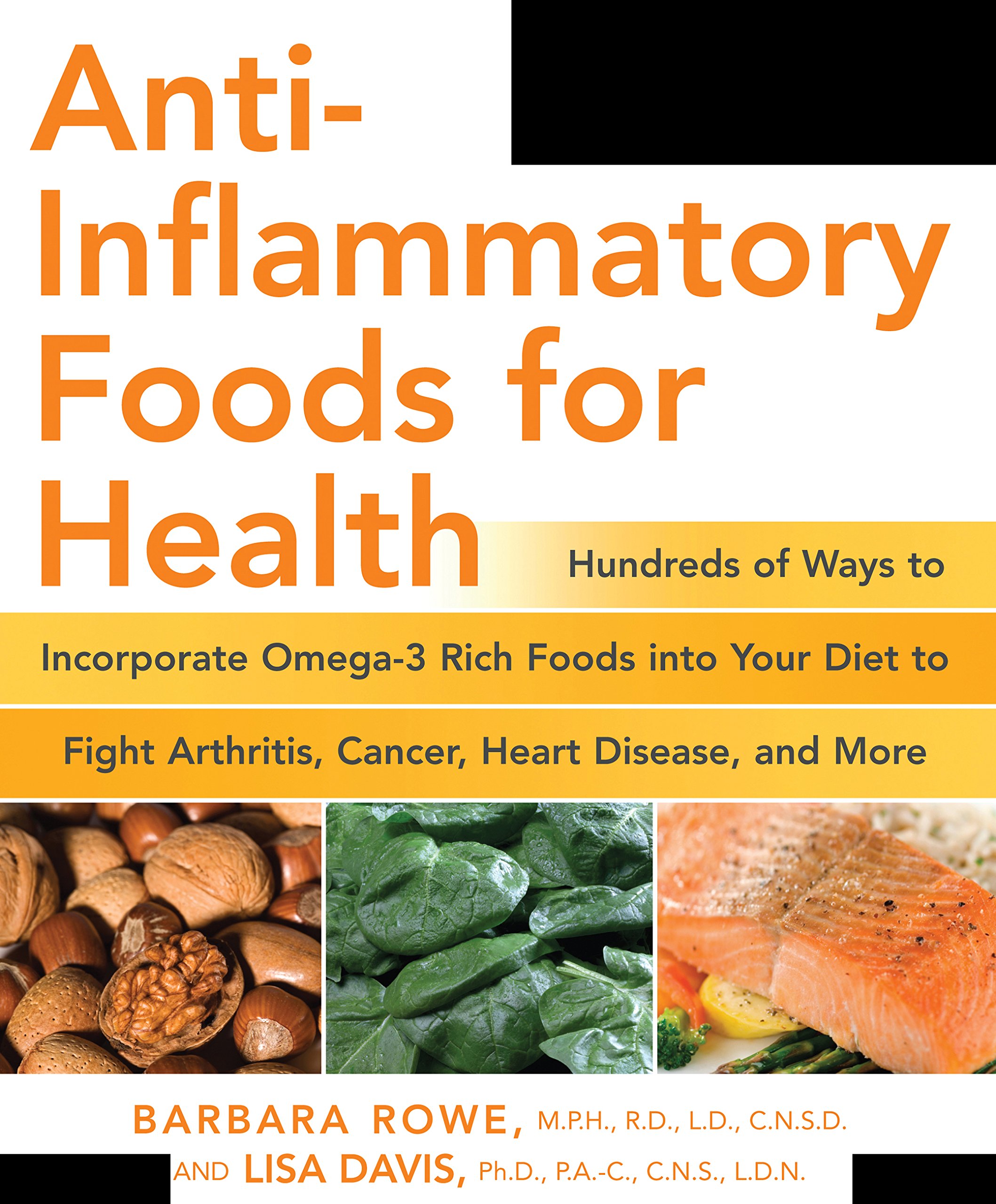
Additionally, researchers are exploring the potential of specific anti-inflammatory compounds found in foods, such as omega-3 fatty acids and polyphenols, as targeted treatments for back pain. This could potentially lead to the development of nutraceuticals or functional foods designed specifically to alleviate back pain.
While these areas of research are promising, it’s important to remember that scientific progress takes time. In the meantime, focusing on a balanced, anti-inflammatory diet as part of a comprehensive back pain management strategy remains a sound approach.
Emerging Nutritional Approaches to Back Pain
Some cutting-edge nutritional approaches currently being studied for back pain management include:
- Intermittent fasting and its potential effects on inflammation
- The ketogenic diet and its impact on neuroinflammation
- Specific probiotic strains for pain reduction
- Herbal and botanical supplements with anti-inflammatory properties
While these approaches show promise, more research is needed to fully understand their effectiveness and safety for managing back pain. Always consult with a healthcare professional before trying any new dietary approach, especially if you have existing health conditions or are taking medications.
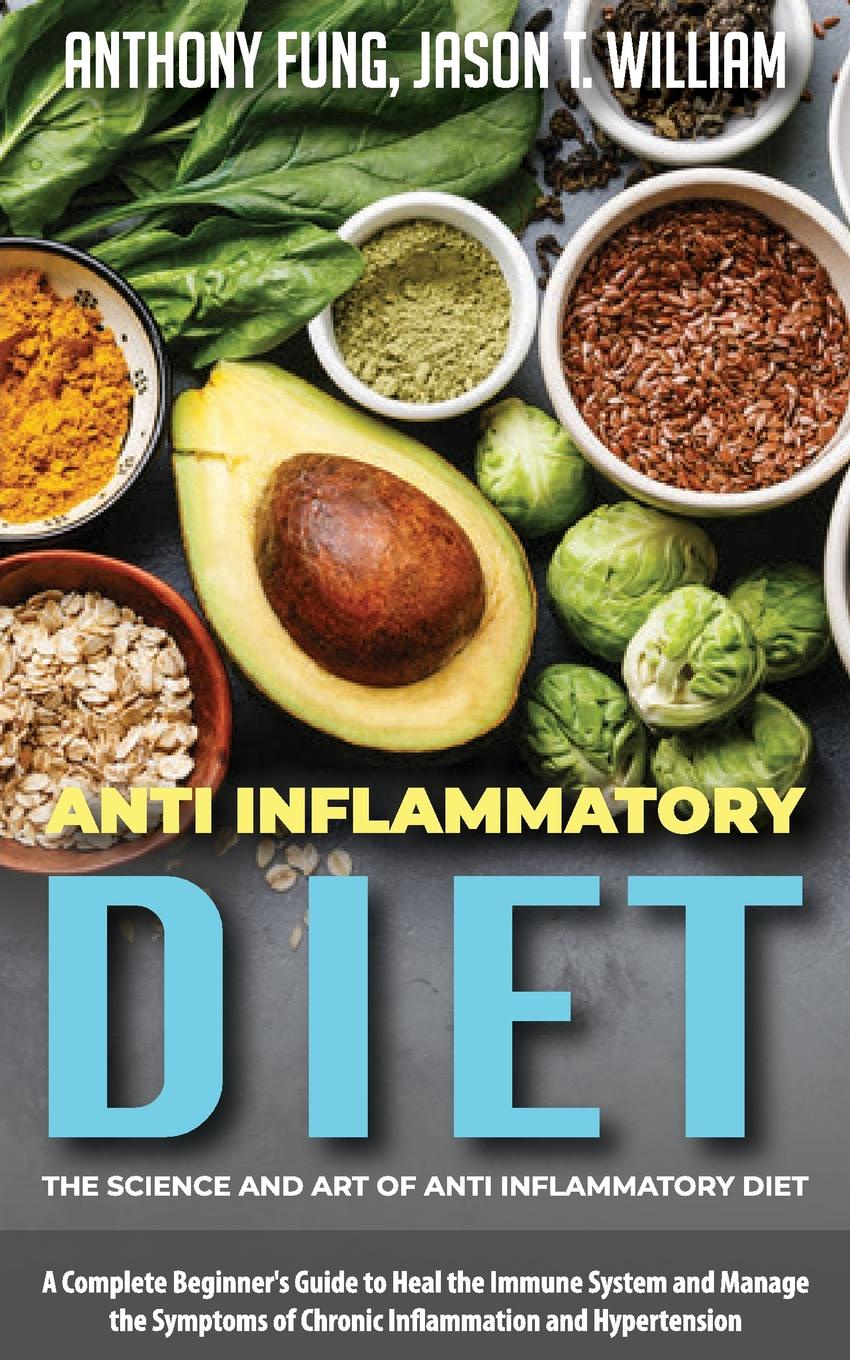
In conclusion, while diet alone may not be a panacea for back pain, it can play a significant role in managing inflammation and supporting overall spine health. By focusing on anti-inflammatory foods, ensuring adequate intake of crucial nutrients like calcium and vitamin D, and adopting a holistic approach to back pain management, you may be able to find relief and improve your quality of life. Remember, every individual is unique, and what works for one person may not work for another. Patience, persistence, and working closely with healthcare professionals are key to finding the most effective strategy for managing your back pain.
Good & Bad Food for Back Pain: Anti-Inflammatory and Inflammatory Food Lists
You will learn the answers to these questions:
Which foods may cause inflammation?
Which foods may reduce inflammation?
Which family of vegetables are commonly thought to cause inflammation (but there’s no evidence)?
What is one vitamin and one mineral that support spine health?
Can my diet play a role in the regulation of inflammation?
Yes.
Can my diet be causing back pain?
Maybe.
Is changing my diet a quick fix to addressing back pain?
No.
Causes of Back Pain
Most people have experienced back pain at least once in their lifetime. The causes of back pain vary from self-inflicted due to bad habits to accidents, muscle or ligament strains, injuries, ruptured disks, and arthritis…just to name a few. There are also factors that increase the risk of developing back pain like: excess weight, lack of exercise, and certain diseases.
Pro-Inflammatory Diet
A pro-inflammatory diet is a diet that lacks fruits and vegetables, contains high amounts of meat, refined grain products, and dessert foods. There has been some evidence that indicates an association between a pro-inflammatory diet and bodily inflammation, in addition to being one of the contributing factors of overweight or obesity.
Moreover, it has been reported that there is an increased association between prevalence of lower back pain and obesity. So, consider paying more attention to food to help relieve some of that back pain.
Often, back pain is the direct result of chronic inflammation. Several studies have examined different foods and how they play a role in reducing inflammation.
There are certain characteristics that comprise an anti inflammatory diet: low in refined carbohydrates (white bread, pizza dough, pasta, pastries, white flour, white rice, desserts), adequate amounts of protein and fats (like omega-3 fatty acids), and foods rich in phytonutrients (a. k.a. antioxidants), micronutrients, and fiber.
k.a. antioxidants), micronutrients, and fiber.
Here is a list of foods that may cause inflammation and you should avoid in your diet:
Unhealthful oils like corn, soya, sunflower, safflower and canola.
Processed carbohydrates like: breakfast cereals, white bread, white pasta, snack foods like chips and crackers, baked goods, pastries, ice cream
Sugar sweetened beverages
Fried foods
Anti-Inflammatory Diet
(name=anti) The strongest scientific evidence suggests that foods high in antioxidants can have an anti-inflammatory effect that helps soothe and reduce the risk of back pain flare ups. If we imagine a diet that compromises all these qualities, they are most likely to be found in a Mediterranean diet.
Below are a list of anti-inflammatory foods for back pain to include in your diet:
Seafood : tuna, salmon, mackerel, sardines, anchovies, shellfish
Fruits (focusing on blueberries, strawberries and raspberries)
Dark leafy vegetables
Legumes/pulses
Nuts and seeds
Olives and olive oil
Herbs & Spices (ginger, turmeric, garlic, oregano, cinnamon, rosemary, cloves)
When dining out, it can be harder to stick to any diet, including an anti-inflammatory one. Consider also following a guide for an anti-inflammatory diet while dining out.
Consider also following a guide for an anti-inflammatory diet while dining out.
What About Nightshade Vegetables?
Nightshade vegetables include tomatoes, eggplants, bell peppers, potatoes, paprika, cayenne pepper. There has been some hype regarding whether these foods seem to trigger flares with individuals with inflammatory diseases.
There is no scientific evidence to confirm the link between nightshades and inflammation. Some individuals may be sensitive to nightshades, but nightshades themselves are not inherently inflammatory. If you believe these foods may be contributing to your inflammation, avoid them for 2 weeks and see if your symptoms subside.
Calcium and Vitamin D
Vitamin D plays an important role in bone health, with one key function of improving the body’s absorption of calcium. As they both contribute to bone mass in the vertebrae in the spine, make sure to check with your doctor if you need any supplementation.
The ideal way is to get more calcium and vitamin D is from your diet. Sources of calcium (aside from dairy) include: spinach, kale, collards and sardines. Foods that provide Vitamin D include: tuna, salmon, cheese, mushroom and egg yolks.
Sources of calcium (aside from dairy) include: spinach, kale, collards and sardines. Foods that provide Vitamin D include: tuna, salmon, cheese, mushroom and egg yolks.
The Bottom Line
There is no single food that will reduce inflammation. The key is to include a variety of fresh nutritious foods and to be aware of the ingredient list if buying a packaged product. Some items may be considered “whole” and “healthy,” but may also contain added sugars/fats which may reduce the anti-inflammatory effect of the food. Diet, exercise, posture, healthy weight and good sleeping position all play their part in relieving back pain.
Nutrition is 1 of the 4 pillars of Goodpath integrative medicine. Get access to a back pain program built on Goodpath’s integrative medicine and machine learning science, personalized just for you:
Learn more about other ways to manage back pain with yoga at home or some supplements that may help.
How an Anti-Inflammatory Diet can Help You Relieve Back Pain
- Home
- From the Doc
- How to Alleviate Back Pain With an Anti-Inflammatory Diet
By Joshua Abrams, DO
Joshua Abrams is a fellowship-trained and board-certified orthopedic spine surgeon, specializing in minimally invasive surgery, artificial disc replacement, and cervical and lumbar spine surgery. He is a thought leader in minimally invasive spine techniques, spinal navigation, and non-fusion technologies.
He is a thought leader in minimally invasive spine techniques, spinal navigation, and non-fusion technologies.
View Bio
June 24, 2022
Our bodies use the nutrients in the food we eat for maintenance and repair, so it’s essential we give them the best materials to work with. If you’re looking for changes you can make at home, adopting an anti-inflammatory diet for your back pain is a great first step.
Some micronutrients help promote a healthy immune system, lowering your inflammatory response. A low-inflammation diet emphasizes foods rich in those vitamins and minerals while reducing your intake of foods that promote inflammation.
You can use this guide to learn more about how your diet affects your back pain and what foods are crucial for fighting inflammation.
How Can Your Diet Affect Back Pain?
Your diet plays a role in your immune system’s strength and promoting or discouraging inflammation.
In the U.S., 39% of adults reported experiencing either mechanical or non-specific back pain. Mechanical back pain is traceable to the spine, including the discs and surrounding tissues. Non-specific back pain — pain that neither you nor your provider can conclusively find the cause of — is often linked to chronic inflammation.
Mechanical back pain is traceable to the spine, including the discs and surrounding tissues. Non-specific back pain — pain that neither you nor your provider can conclusively find the cause of — is often linked to chronic inflammation.
What Causes Inflammation?
When you have an injury or infection, your immune system sends white blood cells to the site. The blood flow to the area increases in response, causing the warmth and redness we recognize as inflammation. This process should stop once the infection or injury heals. Sometimes, however, the immune system never receives the signal to shut off, leading to chronic inflammation.
While you can request blood tests to check for inflammation, they can’t tell you if it’s acute or chronic. The best way to watch for chronic inflammation is to ensure your doctor looks for signs of inflammation-related conditions like heart disease, diabetes and arthritis.
Diet and Back Pain
Some foods can impact your inflammatory response and immune system, increasing or reducing your pain. It’s best to avoid foods that promote the release of inflammatory markers in favor of those that help fight oxidative stress.
It’s best to avoid foods that promote the release of inflammatory markers in favor of those that help fight oxidative stress.
Before you try a new diet, be sure you’re familiar with the potential risks and benefits:
Ketogenic diet
Reducing carbohydrates is an essential part of an anti-inflammatory diet. However, think twice before choosing the keto diet for back pain. This diet is often high in saturated fats, which have been linked to increased inflammation.
DASH diet
The Dietary Approaches to Stop Hypertension (DASH) diet limits items that can trigger inflammation, such as sugar and processed foods.
Mediterranean diet
With a wide variety of whole, unprocessed foods, the Mediterranean diet is a healthy option most people find easy to stick to. Its emphasis on fish also provides a source of omega-3 fatty acids that can help reduce inflammation.
Whether you decide to follow an existing plan or simply modify your shopping list, the best diet for chronic back pain is one that provides the vitamins and minerals you need to keep your immune system healthy.
Building a Diet for Back Pain
Build a diet to reduce back pain by making sure you get the vitamins and minerals that promote a healthy spine and immune system.
Calcium
Calcium is widely recognized for promoting healthy bones and maintaining bone mass. Paired with Vitamin D, calcium can help keep your bones strong and prevent osteoporosis.
Supplement your diet with calcium-rich foods such as:
- Milk
- Cheese
- Yogurt
- Bok choy
- Kale
- Broccoli
- Legumes
- Almonds
- Tofu
- Oranges
Vitamin D
Vitamin D is calcium’s partner in maintaining bone health. Adequate Vitamin D levels let your body absorb calcium from your diet instead of drawing it from your bones.
Since Vitamin D is only naturally present in a few foods, many people get it through spending time in the sun or taking a nutritional supplement.
You can also add Vitamin D to your diet with:
- Fatty fish
- Egg yolks
- Liver
Magnesium
Magnesium plays several roles in body chemistry, one of the most important of which is helping activate Vitamin D. This mineral is a necessary ingredient for regulating the calcium needed to maintain healthy bones. Along with building bone density, magnesium helps relax contracting muscles. Sufficient magnesium is essential for preventing cramps in the muscles supporting the spine.
However, the standard U.S. diet only provides about 50% of the recommended daily amount of magnesium.
Improve your intake by ensuring your diet includes:
- Avocados
- Fish
- Bananas
- Whole grains
- Brown rice
- Broccoli
- Mushrooms
- Leafy green vegetables
Vitamin K
Like Vitamin D, Vitamin K helps the body deal with calcium, guiding its distribution into bones and soft tissues. It also helps reduce inflammatory markers, making it an important part of a low-inflammation diet for back pain.
It also helps reduce inflammatory markers, making it an important part of a low-inflammation diet for back pain.
Vitamin K occurs naturally in two forms. Vitamin K1 is found in plants and Vitamin K2 in animal products, dairy and fermented foods.
Add Vitamin K to your diet with:
- Cabbage
- Kale
- Broccoli
- Spinach
- Swiss chard
- Natto
- Eel
- Cheese
- Beef liver
Vitamin C
You probably already know Vitamin C is good for your immune system. It encourages antibody formation and white blood cell production. It’s also a necessary ingredient for forming collagen and helps heals injuries to tendons, muscles, ligaments and discs.
Good sources of Vitamin C include:
- Strawberries
- Citrus fruits
- Kiwis
- Tomatoes
- Bell peppers
- Spinach
- Sweet potatoes
- Broccoli
Collagen
Collagen builds cartilage, bones, ligaments, and tendons and helps keep them elastic. It also provides a place for calcium to attach, helping maintain bone strength.
It also provides a place for calcium to attach, helping maintain bone strength.
You can add food to your diet that provides collagen directly or that contains the materials your body needs to produce it.
Foods that contain or help produce collagen:
- Chicken
- Egg whites
- Berries
- Citrus fruits
- Garlic
- Beans
- Leafy greens
- Tomatoes
- Cashews
Proteins
Proteins are essential building blocks for bone, soft tissue, and cartilage. They also protect and power the digestive system and provide the amino acids the immune system needs to create antibodies.
When building an anti-inflammatory diet, choose plant-based proteins or fish high in omega-3 fatty acids.
Plant-based proteins & fish high in omega-3 fatty acids
- Tofu
- Edamame
- Lentils
- Chickpeas
- Black beans
- Salmon
- Halibut
- Mackerel
B Vitamins
Loading up on B vitamins helps improve bone health and fight inflammation. Vitamin B12 is a necessary component in building bones and forming red blood cells in bone marrow, while Vitamin B6 helps reduce inflammation.
Vitamin B12 is a necessary component in building bones and forming red blood cells in bone marrow, while Vitamin B6 helps reduce inflammation.
Increase your Vitamin B intake by adding these foods to your diet:
- Leafy greens
- Legumes
- Nutritional yeast
- Sunflower seeds
- Trout
- Salmon
- Beef
- Milk
- Eggs
Iron
Iron helps produce collagen and activate Vitamin D. It also helps your body produce hemoglobin, the part of red blood cells that carries oxygen throughout the body, and is critical for a robust immune system.
You can find iron in:
- Beans
- Lentils
- Red meat
- Chicken
- Turkey
- Nuts
- Broccoli
- Kale
Foods to Avoid
Just as some foods can help reduce inflammation, others can increase it. As you build an anti-inflammatory diet for your back pain, reduce or avoid these foods and ingredients:
- Refined carbs
- Fried foods
- Processed foods and meats
- Sugar
- High-fructose corn syrup
- Sugar-sweetened drinks
- Margarine
- Vegetable shortening
- Alcohol
Need Help Handling Back Pain? Schedule an Appointment Today
Good spine health starts at home, and developing a delicious anti-inflammatory diet can help you keep your back pain in check. If you need a helping hand, the specialists at Desert Institute for Spine Care are here for you.
If you need a helping hand, the specialists at Desert Institute for Spine Care are here for you.
At DISC, we’re the leaders in minimally invasive spine care and know that everyone’s back pain is different. We’ll use a personalized approach to diagnose your pain and treat it, creating a tailored treatment plan that offers long-term relief.
Contact us to schedule a consultation with a spine specialist at one of our five Arizona locations, and develop a plan for your spine health today.
Categories
Back pain and diet
Lose weight
In case of back pain, the attending physician will definitely recommend a patient with overweight to follow a diet in order to reduce excess weight and reduce the load on the musculoskeletal system (spine and joints).
Body mass index (BMI) is used in practice to determine overweight. If the BMI is from 25 to 29.9, then this indicates excess weight, if the BMI is above 30, it indicates obesity. To get your BMI, you need to divide your weight (in kilograms) by your height (in meters) squared.
There are two golden rules for weight loss: reduce your calorie intake and incorporate moderate exercise into your life. It is very important to understand that you need to seriously change your lifestyle: short-term diets and physical activity allow you to lose weight, but when you return to old habits, the weight will be restored.
The best way is to make small changes in your lifestyle and stick with them. Then you can gradually add new changes, which also need to be adhered to.
Currently, there are medications and surgical interventions that help reduce body weight, but they are only indicated for people with a high BMI and those who have not been able to lose weight through diet and exercise. But even after surgery, patients must adhere to diet and exercise.
Balance your diet
Many studies have examined the effects of various foods and supplements on back pain. A minor analgesic effect was found in black pepper, turmeric, soybeans, avocado, fish oil, and vitamin D. A review of several studies found positive effects of nutritional supplements such as L-carnitine, curcumin, passion fruit skin extract, collagen hydrolyzate, glucosamine and chondroitin, cytidine and uridine.
A review of several studies found positive effects of nutritional supplements such as L-carnitine, curcumin, passion fruit skin extract, collagen hydrolyzate, glucosamine and chondroitin, cytidine and uridine.
Strengthen bones
Several independent studies have shown better results in patients with back pain who took fish oil (omega 3 fatty acids) for 2 years. This is most likely due to the anti-inflammatory effects of the acids found in fish oil.
If a patient with back pain has osteoporosis or is at increased risk of developing it, two nutritional supplements, calcium and vitamin D, should be added to the diet. The main sources of calcium in the diet are milk and other dairy products such as hard cheese , cottage cheese or yogurt, as well as green vegetables (cabbage and broccoli). Some grains, soy products, and fruit juices are fortified with calcium.
“Give food” to nerve fibers
If the spinal roots are damaged, a persistent pain neuropathic syndrome develops.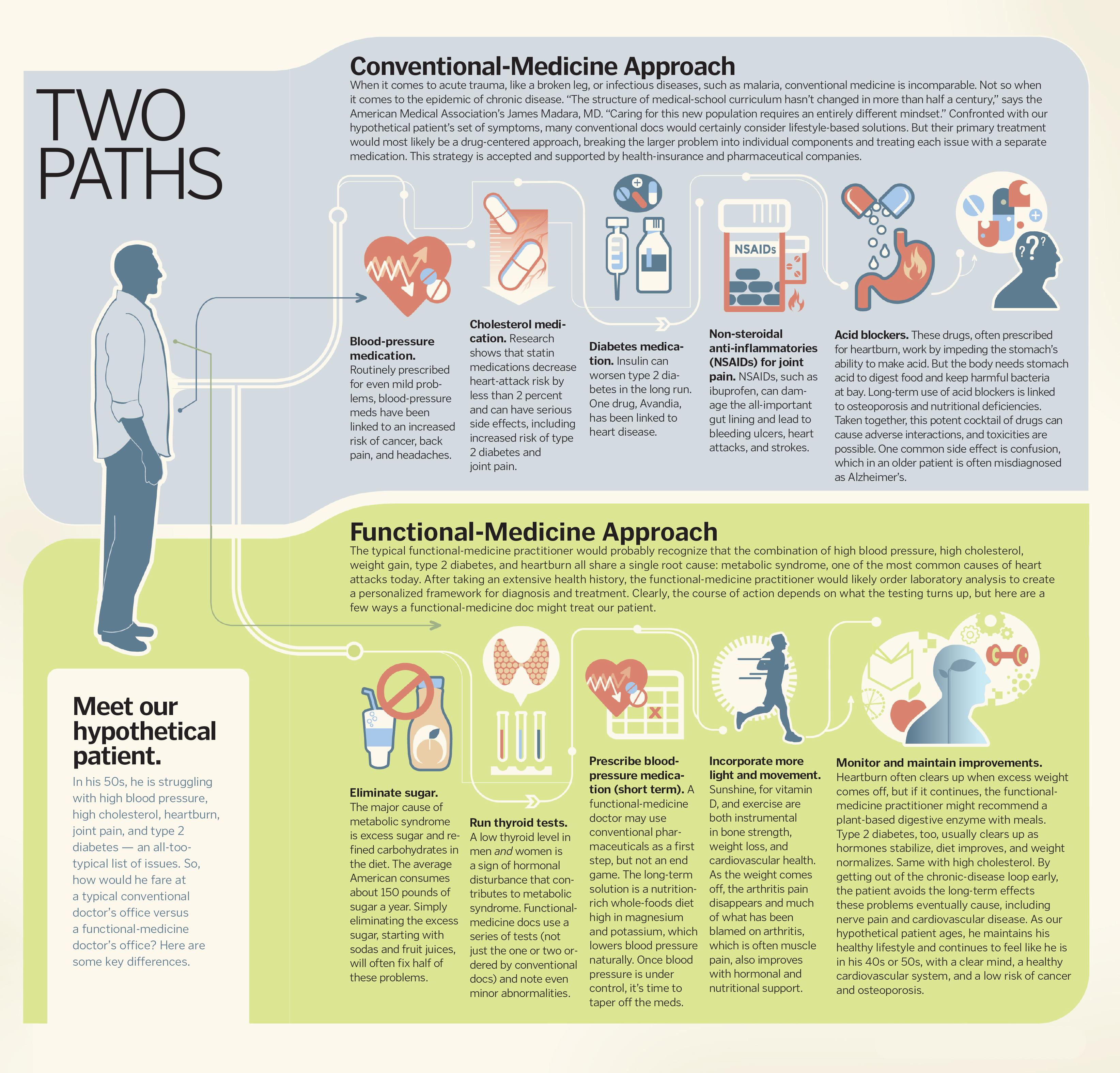 It is manifested by shooting pain, a crawling sensation in the area for which the damaged nerve is responsible, a burning sensation. Pain syndrome significantly reduces the quality of life: it is difficult to sit and stand, bend over, lead an active lifestyle, do your favorite things.
It is manifested by shooting pain, a crawling sensation in the area for which the damaged nerve is responsible, a burning sensation. Pain syndrome significantly reduces the quality of life: it is difficult to sit and stand, bend over, lead an active lifestyle, do your favorite things.
Neuropathic pain develops against the background of damage to the membrane of the spinal root, which consists of myelin. Against the background of the prescribed treatment, the damaged shell can be restored. Studies have shown that nucleotides, B vitamins, and folic acid play an important role in the restoration of this shell. In the complex therapy of pain in the back, the patient may be recommended to take Keltikan® complex, which contains the nucleotide uridine monophosphate, vitamins B6 and B12, folic acid, which contribute to the restoration and regeneration of the nerve fiber. The drug is prescribed 1 capsule in the morning for at least 20 days.
Thus, the patient with back pain is advised to reduce excess body weight by reducing the calorie intake and introducing moderate physical activity. The diet should be balanced and complete. It is recommended to include foods rich in calcium and B vitamins: soybeans, avocados, milk and other dairy products, hard cheese, cottage cheese, yogurt, green vegetables, cabbage, broccoli, fish, liver, chicken meat, eggs, nuts, legumes , bananas. Use black pepper and turmeric in cooking. Recommended intake of fish oil and vitamin D, L-carnitine, passion fruit skin extract, collagen hydrolyzate, glucosamine and chondroitin, cytidine and uridine.
The diet should be balanced and complete. It is recommended to include foods rich in calcium and B vitamins: soybeans, avocados, milk and other dairy products, hard cheese, cottage cheese, yogurt, green vegetables, cabbage, broccoli, fish, liver, chicken meat, eggs, nuts, legumes , bananas. Use black pepper and turmeric in cooking. Recommended intake of fish oil and vitamin D, L-carnitine, passion fruit skin extract, collagen hydrolyzate, glucosamine and chondroitin, cytidine and uridine.
Sources
- Torlak MS., Bagcaci S., Akpinar E., Okutan O., Nazli MS., Kuccukturk S. The effect of intermittent diet and/or physical therapy in patients with chronic low back pain: A single-blinded randomized controlled trial. // Explore (NY) – 2020 – Vol – NNULL – p.; PMID:32859542
- Bowman M.A., Neale A.V., Seehusen D.A. New Research on Back Pain, Diet and Diabetes, Advanced Care Planning, and Other Issues Frequently Seen in Family Medicine. // J Am Board Fam Med – 2020 – Vol32 – N6 – p.
 759-762; PMID:31704741
759-762; PMID:31704741 - Rashid A. Yonder: Injectable contraception, back pain, family-centred care, and diet soft drinks. // Br J Gen Pract – 2016 – Vol66 – N643 – p.95; PMID:26823257
- Berberian P., Obimba C., Glickman-Simon R., Sethi T. Herbs for Low-Back Pain, Acupuncture for Psychological Distress, Osteopathic Manipulative Therapy for Chronic Migraine, Honey Dressings for Burns, Vegetarian Diet and Risk of Colorectal Cancer. // Explore (NY) – 2015 – Vol11 – N5 – p.410-4; PMID:26238168
Published as an advertisement.
Diet for osteochondrosis | Sanatorium Gorny
Osteochondrosis is a chronic disease of the musculoskeletal system, in which dystrophic changes occur in the articular cartilage. The cartilages of the intervertebral discs of different parts of the spine are most often affected. This is one of the most common diseases of the musculoskeletal system. Osteochondrosis is diagnosed at any age, characterized by a chronic progressive course.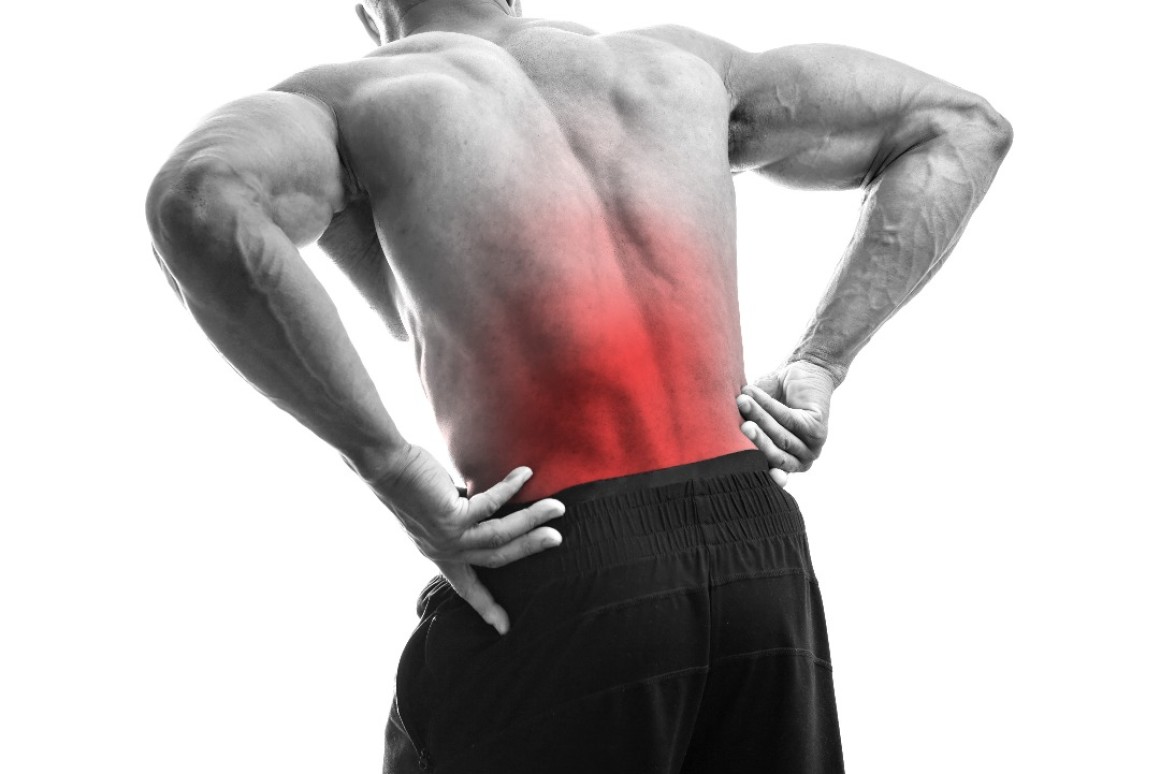
If you have osteochondrosis , then you should regularly carry out preventive treatment .
The development of osteochondrosis provokes a sedentary lifestyle, metabolic disorders, hereditary predisposition, age-related changes and overweight. Symptoms of osteochondrosis are varied and depend on the location of dystrophic changes in the spine. The main manifestations include back pain of varying intensity, limited mobility, impaired blood supply to different parts of the body. Treatment of osteochondrosis should be long-term, complex, including different methods:
- drug therapy,
- physiotherapy,
- massage, physiotherapy exercises,
- diet therapy.
Nutrition for osteochondrosis does not have strict restrictions. But this is only if the patient has a normal weight. If body weight exceeds the norm, a low-calorie diet is required. It is also necessary to take a sufficient amount of vitamins, macro- and microelements, liquids.
Proper nutrition in osteochondrosis should ensure the supply of substances necessary for the synthesis of cartilage tissue. These substances include chondroprotectors. In large quantities, chondroprotectors are found in jelly, jellied fish, jelly, and fish. Of the desserts for osteochondrosis, fruit jelly is very useful.
An insufficient amount of fluid causes dehydration of the intervertebral discs, resulting in the development of dystrophic changes in the cartilaginous tissue. Therefore, with osteochondrosis, it is very important to consume at least 2 liters of water per day.
With osteochondrosis, the diet should be enriched with proteins. Their number should be at least one third of the total amount of food. The main sources of protein include meat, fish, legumes, nuts, eggs, cod liver, beef liver. These products should be present at least 3-4 times a week in the daily diet.
Calcium is essential for bone tissue. This macronutrient is found in hard cheese, cottage cheese, milk, leaf lettuce. The assimilation of calcium in the body is possible only in the presence of vitamin D. Vitamin D can be synthesized in the body when exposed to ultraviolet rays – while sunbathing. To replenish vitamin D, you need to eat sea fish, butter, eggs.
The assimilation of calcium in the body is possible only in the presence of vitamin D. Vitamin D can be synthesized in the body when exposed to ultraviolet rays – while sunbathing. To replenish vitamin D, you need to eat sea fish, butter, eggs.
What foods to exclude
With osteochondrosis, coffee and carbonated drinks should be abandoned. Research scientists have proven that they cause leaching of calcium, potassium and magnesium from bone tissue, causing the development of osteoporosis. Coffee lovers are advised to replenish the loss of these elements by taking products containing them in large quantities. It can be dried fruits, cottage cheese, nuts, baked potatoes, bananas. Additionally, you can take pharmaceutical preparations.
From the diet it is recommended to exclude dishes with sorrel, all types of alcohol, grapes and grape juice, meat broths. To normalize body weight, it is worth refusing to take simple carbohydrates, which include various sugars. Simple carbohydrates are replaced by complex ones. Such carbohydrates are found in cereals, vegetables and fruits. The intake of table salt, fatty foods, smoked meats, canned food is limited. It is necessary to abandon semi-finished products, products with preservatives, flavorings, and other food additives.
Simple carbohydrates are replaced by complex ones. Such carbohydrates are found in cereals, vegetables and fruits. The intake of table salt, fatty foods, smoked meats, canned food is limited. It is necessary to abandon semi-finished products, products with preservatives, flavorings, and other food additives.
Menu for the week
Nutrition for osteochondrosis should be fractional, low-calorie, with a sufficient amount of protein and liquid. In the weekly diet, foods rich in chondroprotectors should be present. Below is a menu with an assortment of dishes for different meals.
1. Breakfast. Boiled eggs, hard cheese, cottage cheese, butter, oatmeal, green tea.
2. Second breakfast. Fresh fruits, yogurt, nuts.
3. Lunch. Fresh vegetable salad, vegetable soup, borscht, steamed or stewed sea fish or meat dishes, aspic, jellied fish, fresh fruit compote.
4. Snack. Fruit jelly, fresh fruit.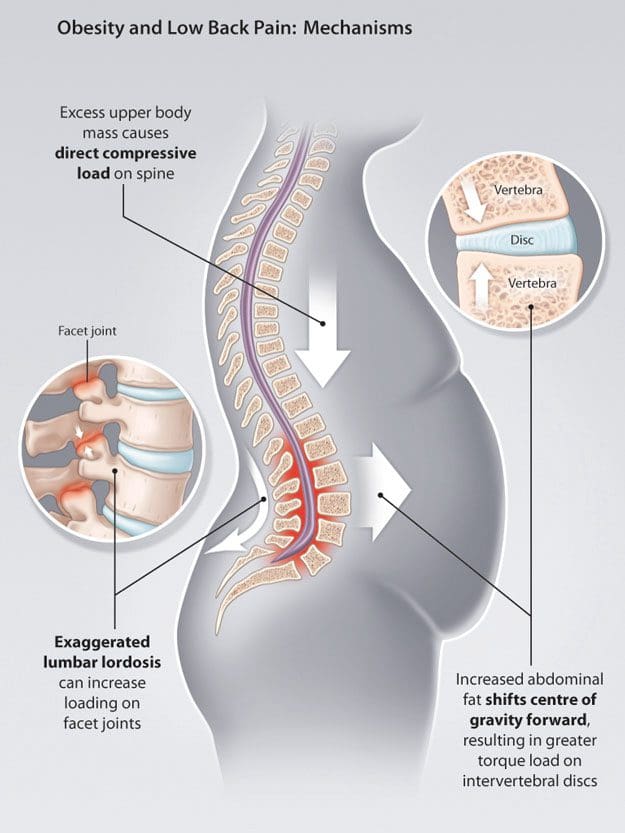

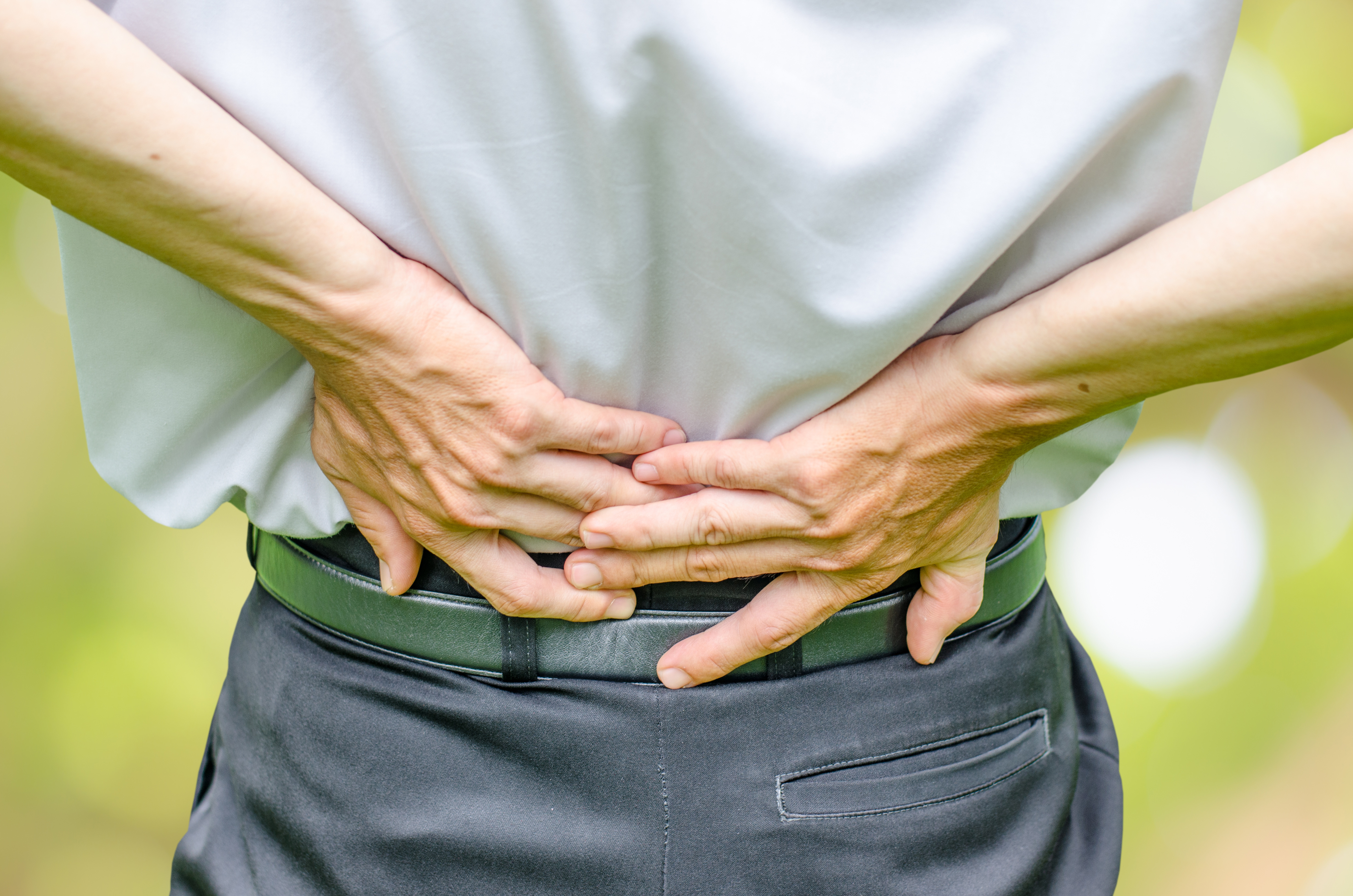 759-762; PMID:31704741
759-762; PMID:31704741